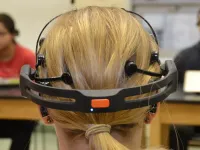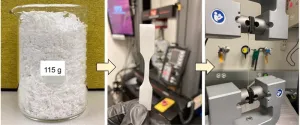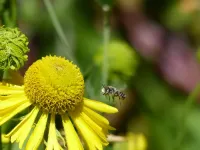(Press-News.org) Researchers have created the largest atlas of post-zygotic genome mutations in healthy human tissue ever assembled — a scientific advancement that could unlock new avenues for diagnosing and treating genetic disease. It is the largest ever in terms of the combined number of tissues and number of donors sampled.
The study, led by researchers at Oregon Health & Science University, published today in the journal Science.
The development points the way toward understanding the genetic underpinnings of disease associated with cancer as well as innumerable conditions caused by cellular malfunction, including aging. The atlas could be useful in diagnosing medical conditions, and potentially useful in reversing genetic mutations that cause disease.
“If you’re talking about genetic changes being the basis of disease, there are a wide variety of technologies now that allow us to make changes to the genome,” said senior author Don Conrad, Ph.D., associate professor in the OHSU School of Medicine who directs the Division of Genetics at the Oregon National Primate Research Center. “It may be possible to change those mutations we’ve acquired due to bad luck or bad habits, and change them back to what they were before.”
Window into cell mutations
Researchers generated the atlas using 54 tissue and cell types compiled after death from 948 individuals who donated their bodies for the National Institute of Health’s Genotype-Tissue Expression Program.
Every person begins as a single cell at the moment of conception, carrying a DNA blueprint within the nucleus of that first fertilized cell. Using those original DNA instructions, the cell divides and replicates into vast groups of cells that form distinct tissues carrying out unique functions in the body. At any one time, the average person is comprised of about 30 trillion cells; in the course of a lifetime, that same person produces quadrillions of cells.
Over time, an individual cell is damaged again and again. In some cases, they repair themselves thousands of times a day.
“Every once in a while, the cell makes a mistake during DNA repair, or misses one — and that’s a change that gets propagated on,” Conrad said. “Our work gives us a window to the extent that those changes occur in different organs and tissues, and during different periods of our lives.”
This situation, known as somatic mosaicism, is a result of cells mutating from the original DNA blueprint.
Building the atlas
Until now, genetic research investigating mutations that occur post-zygotically, or after fertilization, has generally been conducted in biopsies of cancerous tissue such as skin melanomas and lung tumors, or in easily accessible tissues such as blood.
The new atlas opens a field of inquiry into mutations that occur over the course of a lifetime.
“Going from a single cell to a child is a remarkable process,” said lead author Nicole Rockweiler, Ph.D., previously part of Conrad’s lab at OHSU and Washington University in St. Louis, and now a postdoctoral associate at the Broad Institute of Massachusetts Institute of Technology and Harvard University. “When you add on layers of mutations happening at such an important part of our lives, it’s amazing that we can come out pretty well at the end of our gestation.”
To generate the new atlas, researchers developed a computational method using bulk RNA sequencing to characterize the mutations in a massive catalogue of tissue samples throughout the body. They were able to trace the point at which mutations occurred by mapping them to a “developmental tree,” indexing them across tissues and among many people. They found many mutations arose systematically and somewhat predictably as people age, although roughly 10% of mutations appeared to be the result of something intrinsic to an individual, be it genes or environment.
They found most detectable mutations occurred later in life, although many occurred before birth.
“We learned that some tissues, like the esophagus and liver, acquire a lot of mutations whereas other tissues like the brain, acquire fewer mutations,” Rockweiler writes in a post on the Conrad Lab website describing the research. “This made sense to us because the esophagus and liver are exposed to many environmental toxins; here the cells must transmit the message in a noisy environment. A low number of mutations in the brain also makes sense because the brain is primarily composed of cells that don’t replicate.”
Funding for the research was supported by the National Institutes of Health awards R01MH101810, R01HG007178 and R01HD078641; the National Human Genome Research Institute award T32HG000045; and the Medical Research Council awards MR/M004422/1 and MR/R023131/1.
END
OHSU researchers assemble comprehensive atlas of gene mutations in human tissue
With hundreds of donors, guide is most complete ever created; could lead to better diagnosis and treatment of disease associated with ‘bad luck or bad habits’
2023-04-13
ELSE PRESS RELEASES FROM THIS DATE:
In sync brainwaves predict learning, study shows
2023-04-13
Students whose brainwaves are more in sync with their classmates and teacher are likely to learn better than those lacking this “brain-to-brain synchrony,” shows a new study by a team of psychology and education researchers. The findings, which appear in the journal Psychological Science, offer new insights into the learning process.
“This is the first study to show that the extent to which students’ and teachers’ brainwaves are in sync during real-world learning can predict how well students retain information from class,” says lead author Ido Davidesco, an assistant professor at the ...
Researchers discover tiny galaxy with big star power using James Webb telescope
2023-04-13
Using first-of-their-kind observations from the James Webb Space Telescope, a University of Minnesota Twin Cities-led team looked more than 13 billion years into the past to discover a unique, minuscule galaxy that generated new stars at an extremely high rate for its size. The galaxy is one of the smallest ever discovered at this distance—around 500 million years after the Big Bang—and could help astronomers learn more about galaxies that were present shortly after the Universe came into existence.
The paper is published in Science, one of the world's top peer-reviewed academic journals.
The University of Minnesota researchers were one of the first teams to study ...
Humans, and piglets, and bears, oh my! Preventing dangerous blood clots
2023-04-13
“Don’t poke the bear”, they said. But that’s exactly what a team of scientists have been doing, to discover the secrets of blood clotting.
Hibernating bears, paralysed humans, and pigs kept in small enclosures all avoid dangerous blood clots, despite being immobile for extremely long periods.
Research from the University of Reading, with partners in Denmark, Germany, Norway and Sweden, shows that reduction of a key protein prevents the formation of blood clots in all three mammal species when they ...
UTSA astrophysicist leads international team in discovery of new exoplanet outside Earth’s solar system
2023-04-13
(SAN ANTONIO) April 13, 2023 - An international research team led by UTSA Associate Professor of Astrophysics Thayne Currie has made a breakthrough in accelerating the search for new planets.
In a paper slated for publication April 14 in Science, Currie reports the first exoplanet jointly discovered through direct imaging and precision astrometry, a new indirect method that identifies a planet by measuring the position of the star it orbits. Data from the Subaru Telescope in Hawai`i and space telescopes from the European Space Agency (ESA) were integral to the team’s discovery.
An ...
Shift to ‘flash droughts’ as climate warms
2023-04-13
Embargoed: Not for Release Until 19:00 (7.00 pm) British Summer Time, Thursday, 13 April 2023
Shift to ‘flash droughts’ as climate warms
‘Flash droughts’ have become more frequent due to human-caused climate change and this trend is predicted to accelerate in a warmer future, according to research published today [13 April 2023] involving the University of Southampton.
The research published in Science shows that flash droughts, which start and develop rapidly, are becoming ‘the new normal’ for droughts, making forecasting and preparing for their impact more difficult.
Flash ...
First Nations populations at greater risk of severe flu, research finds
2023-04-13
First Nations populations at greater risk of severe flu, research finds
Responsible for over 5 million infections and 100,000 deaths every year, influenza remains one of the most challenging public health issues for populations globally, particularly First Nations communities.
New research from the Peter Doherty Institute for Infection and Immunity (Doherty Institute) has found that First Nations populations around the world are significantly more likely to be hospitalised and die from influenza compared to non-Indigenous populations.
Researchers from the Doherty ...
Channeling mechanical energy in a preferred direction
2023-04-13
A research group led by scientists from the RIKEN Center for Emergent Matter Science have developed a unique material, based on nanofillers embedded in a hydrogel, that can channel mechanical energy in one direction but not the other, acting in a “nonreciprocal” way. With this composite material--which can be constructed at various sizes--the team was able to use vibrational up-and-down movements to make liquid droplets rise within a material against gravity. Using this material could thus make it possible to make use of random vibrations and move matter in a preferred direction.
Channeling energy in a preferred direction is an ...
Chemists redesign biological PHAs, ‘dream’ biodegradable plastics
2023-04-13
They’ve been called “dream” plastics: polyhydroxyalkanoates, or PHAs. Already the basis of a fledgling industry, they’re a class of polymers naturally created by living microorganisms, or synthetically produced from biorenewable feedstocks. They’re biodegradable in the ambient environment, including oceans and soil.
But there’s a reason PHAs haven’t taken off as a sustainable, environmentally benign alternative to traditional plastics. Crystalline PHAs are brittle, so not as durable and convenient as conventional plastics. They cannot easily be melt-processed and recycled, making them expensive to produce.
Colorado State ...
Bees flock to clearcut areas but numbers decline as forest canopy regrows, OSU research shows
2023-04-13
CORVALLIS, Ore. – Native bees in the Oregon Coast Range are diverse and abundant in clearcut areas within a few years of timber harvest but their numbers drop sharply as planted trees grow and the forest canopy closes, research by Oregon State University shows.
The findings are important for understanding the roles forest management might play in the conservation of a crucial pollinator group, the researchers said.
The study, led by graduate student Rachel Zitomer and Jim Rivers, an animal ecologist in the OSU College of Forestry, was published in Ecological Applications.
“The research demonstrates ...
Global study finds some women experience heavier menstrual flow after COVID-19 vaccination
2023-04-13
A new international study finds that women vaccinated for COVID-19 have a slightly higher risk for a heavier period after vaccination.
The study, led by Oregon Health & Science University reproductive health services researcher Blair Darney, Ph.D., M.P.H., and physician-scientist Alison Edelman, M.D., M.P.H., published today in the British Journal of Obstetrics and Gynaecology. These findings build on prior work from the same research team that first identified an association between COVID-19 vaccines ...
LAST 30 PRESS RELEASES:
Sleeping in on weekends may help boost teens’ mental health
Study: Teens use cellphones for an hour a day at school
After more than two years of war, Palestinian children are hungry, denied education and “like the living dead”
The untold story of life with Prader-Willi syndrome - according to the siblings who live it
How the parasite that ‘gave up sex’ found more hosts – and why its victory won’t last
When is it time to jump? The boiling frog problem of AI use in physics education
Twitter data reveals partisan divide in understanding why pollen season's getting worse
AI is quick but risky for updating old software
Revolutionizing biosecurity: new multi-omics framework to transform invasive species management
From ancient herb to modern medicine: new review unveils the multi-targeted healing potential of Borago officinalis
Building a global scientific community: Biological Diversity Journal announces dual recruitment of Editorial Board and Youth Editorial Board members
Microbes that break down antibiotics help protect ecosystems under drug pollution
Smart biochar that remembers pollutants offers a new way to clean water and recycle biomass
Rice genes matter more than domestication in shaping plant microbiomes
Ticking time bomb: Some farmers report as many as 70 tick encounters over a 6-month period
Turning garden and crop waste into plastics
Scientists discover ‘platypus galaxies’ in the early universe
Seeing thyroid cancer in a new light: when AI meets label-free imaging in the operating room
Neutrophil-to-lymphocyte ratio may aid risk stratification in depressive disorder
2026 Seismological Society of America Annual Meeting
AI-powered ECG analysis offers promising path for early detection of chronic obstructive pulmonary disease, says Mount Sinai researchers
GIMM uncovers flaws in lab-grown heart cells and paves the way for improved treatments
Cracking the evolutionary code of sleep
Medications could help the aging brain cope with surgery, memory impairment
Back pain linked to worse sleep years later in men over 65, according to study
CDC urges ‘shared decision-making’ on some childhood vaccines; many unclear about what that means
New research finds that an ‘equal treatment’ approach to economic opportunity advertising can backfire
Researchers create shape-shifting, self-navigating microparticles
Science army mobilizes to map US soil microbiome
Researchers develop new tools to turn grain crops into biosensors
[Press-News.org] OHSU researchers assemble comprehensive atlas of gene mutations in human tissueWith hundreds of donors, guide is most complete ever created; could lead to better diagnosis and treatment of disease associated with ‘bad luck or bad habits’





